Abstract
When Spirodela plants are transferred to a phosphate-deficient medium, growth slows down immediately, and ceases after 14 days. During this time, inorganic phosphate content falls from 30 to 0.7 μmoles/g fresh weight of tissue, phosphate ester content from 3.5 to 0.6 μmoles/g, phospholipid content from 3.5 to 1.2 μmoles/g, and residual phosphate (mainly RNA) content from 7.5 to 2.0 μmoles/g. Relative proportions of the various phosphate esters, and relative proportions of the various phospholipids, are not markedly affected by phosphate deficiency. Turnover rates of phosphate esters are somewhat higher in phosphate-deficient tissue. In control tissue, inorganic phosphate is present in 2 pools; a metabolic (12%) and a non-metabolic pool (88%). In phosphate-deficient tissues, most of the inorganic phosphate (>90%) is in the metabolic pool. Non-metabolic phosphate is presumably stored in the vacuole, and is not readily accessible to the tissue, so that growth normally occurs at the expense of external phosphate. During deficiency, growth is limited by the rate at which phosphate can be transported through the tonoplast and tissue to the growing point. Growth ceases when the supply of non-metabolic phosphate is exhausted. Metabolic phosphate is presumably located in the cytoplasm: it can not be used for growth. Nor can the plant respond to deficiency by making some phosphorus compounds at the expense of others. In this respect, phosphorus deficiency and nitrogen deficiency are dissimilar.
Full text
PDF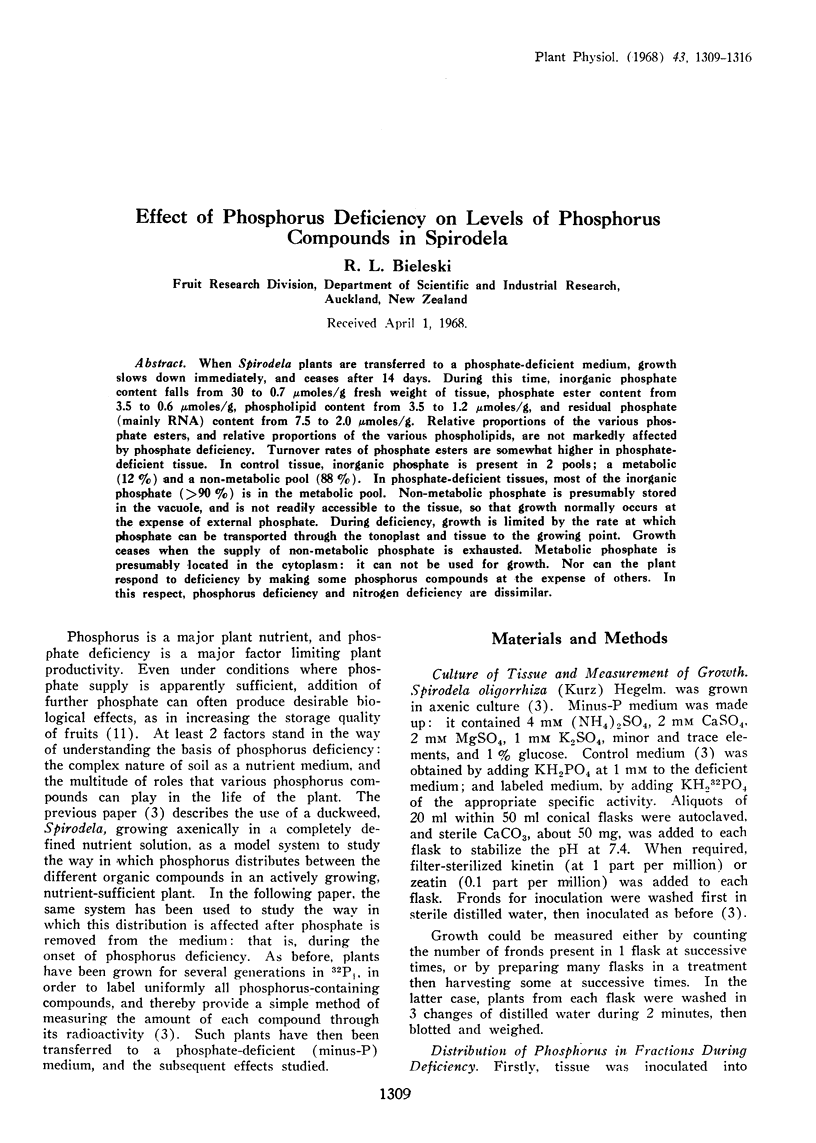
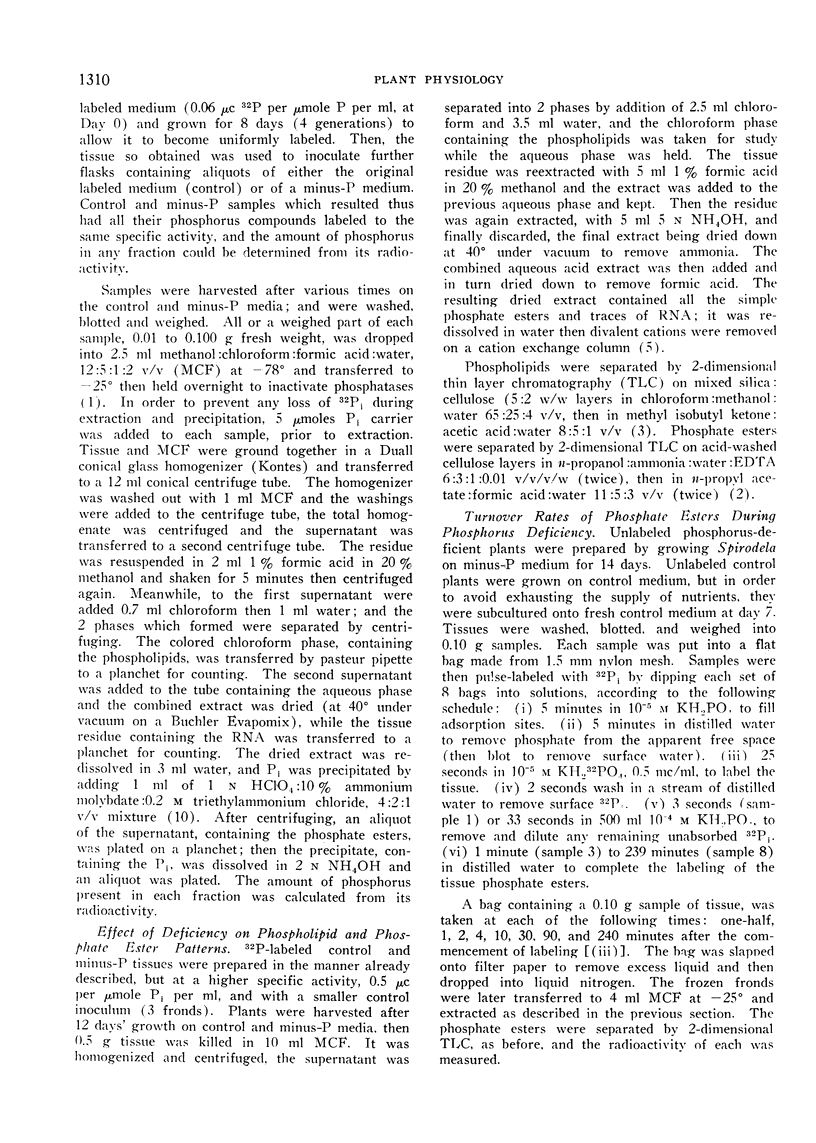
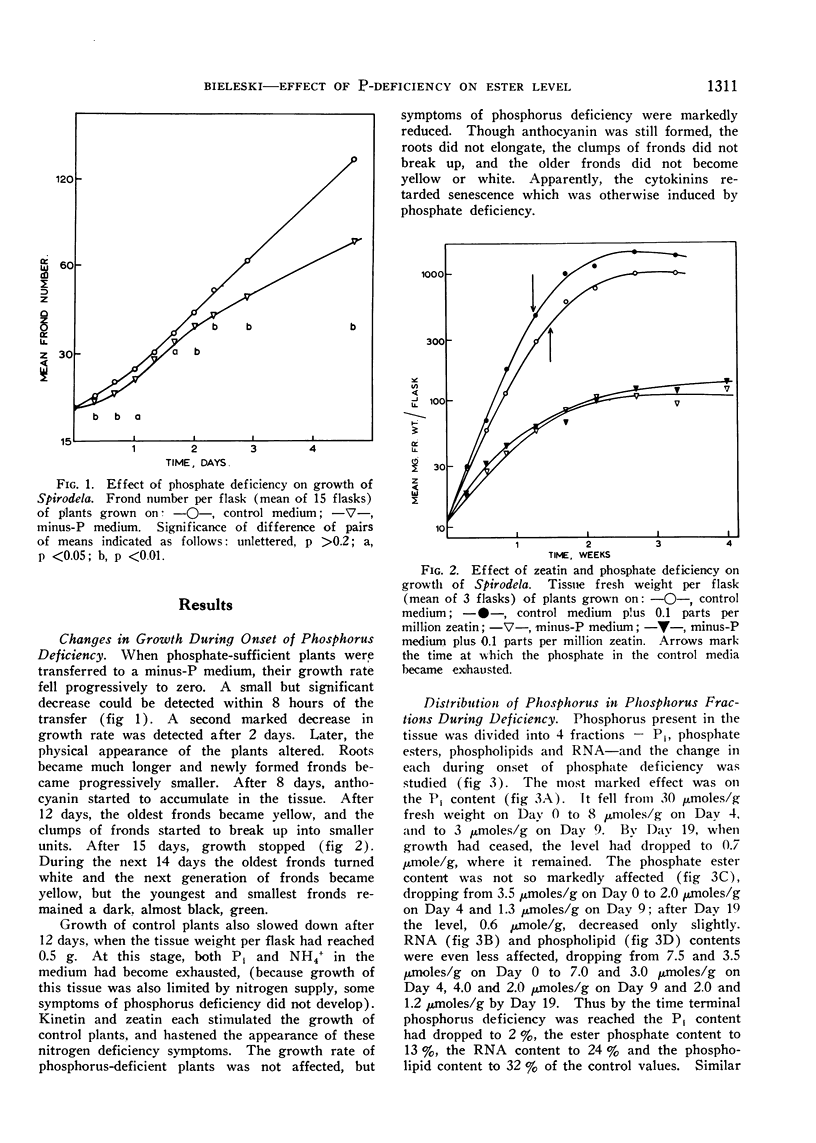
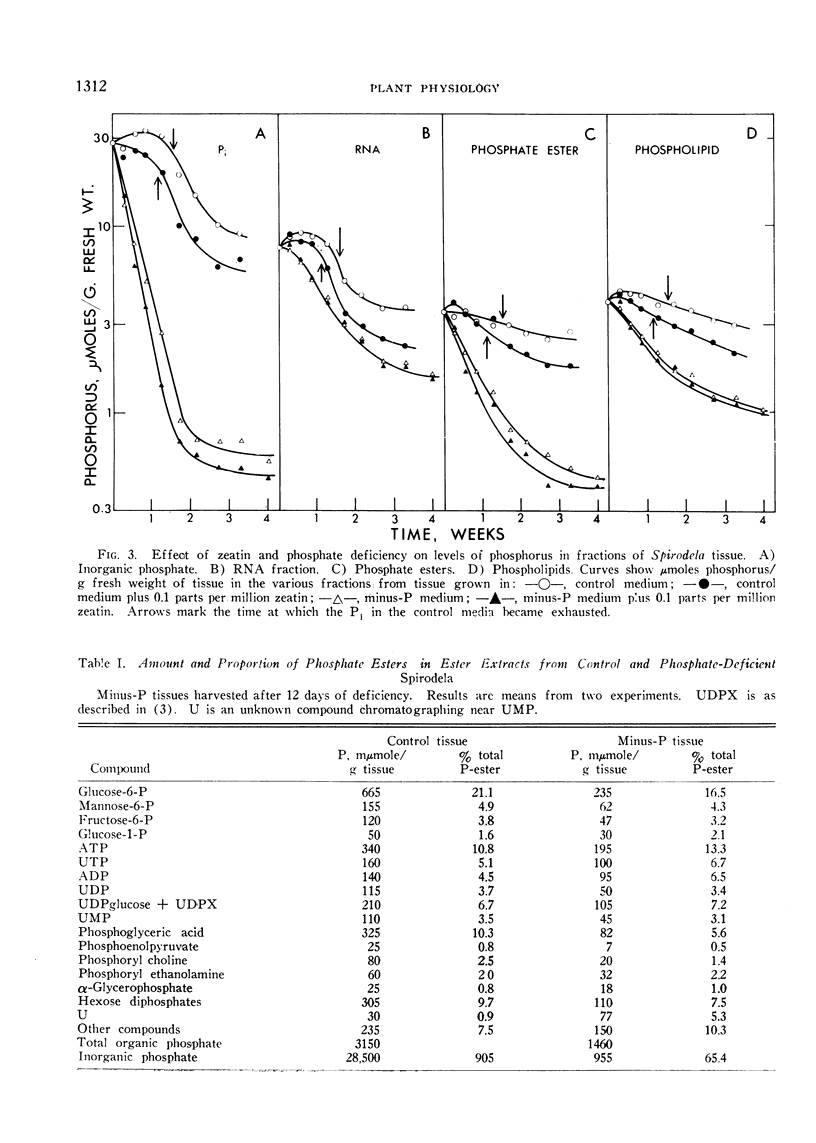
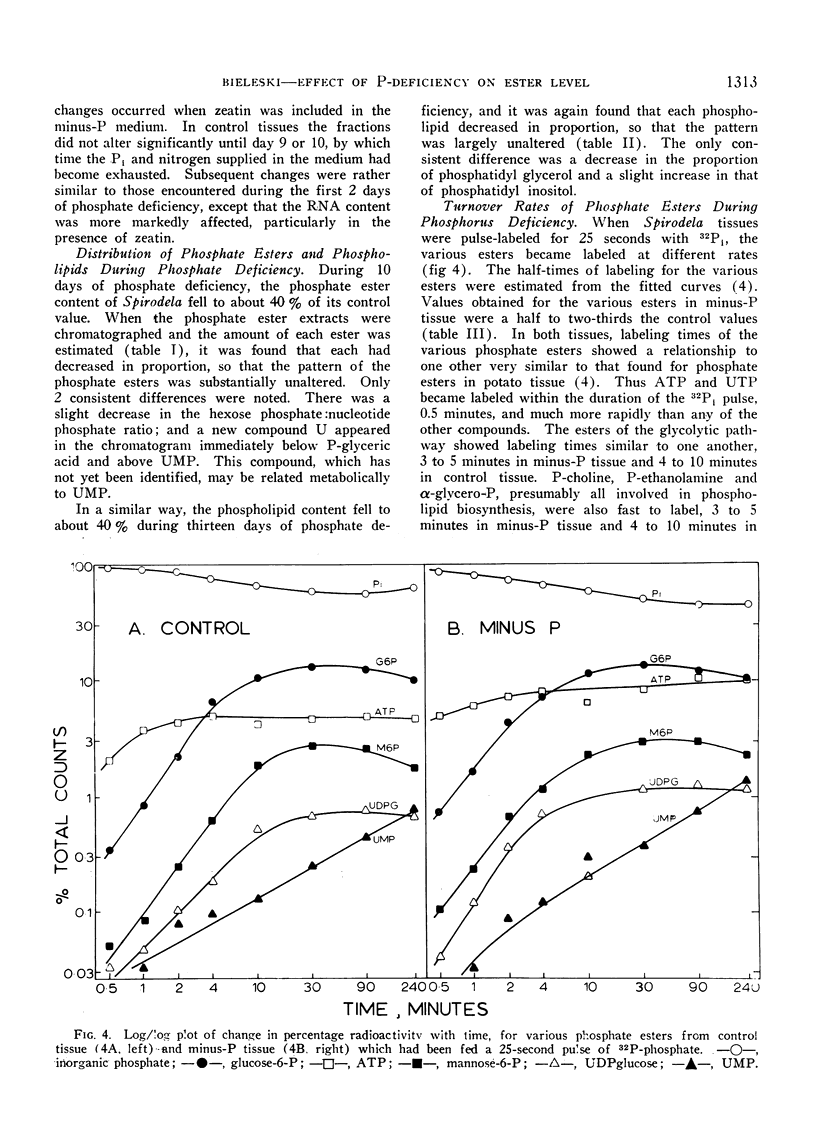
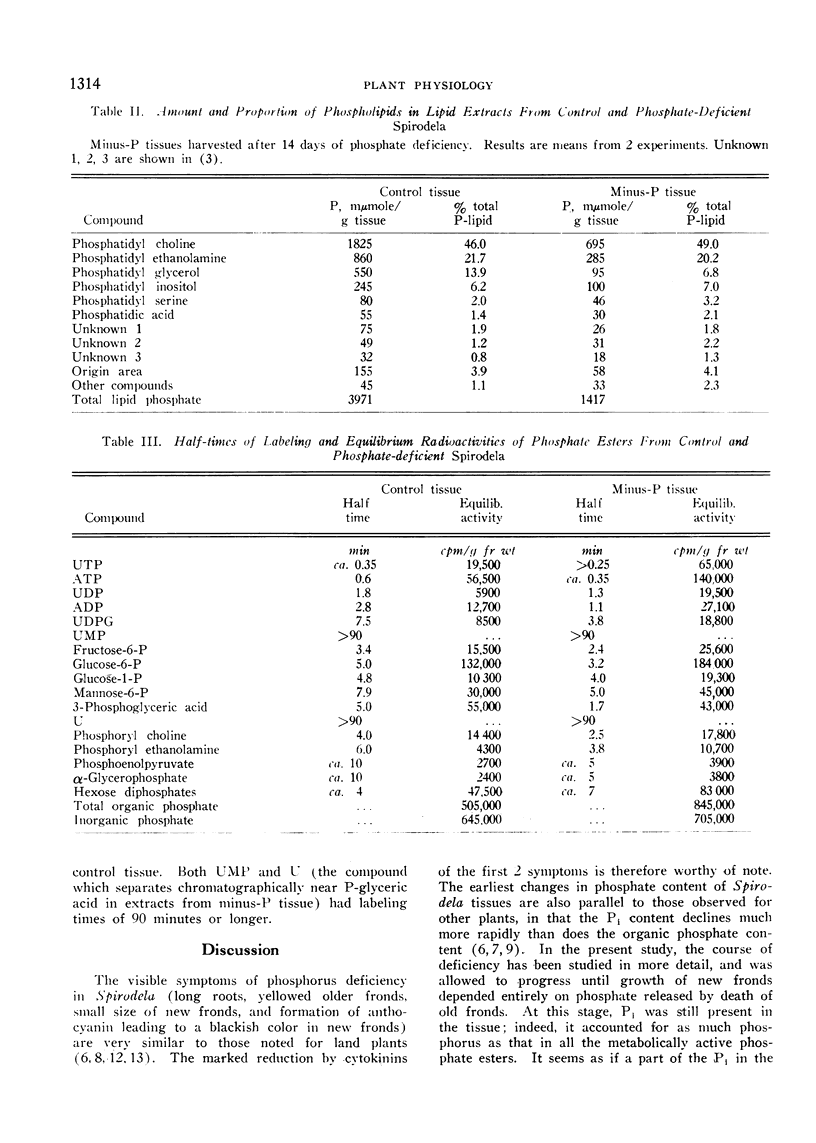
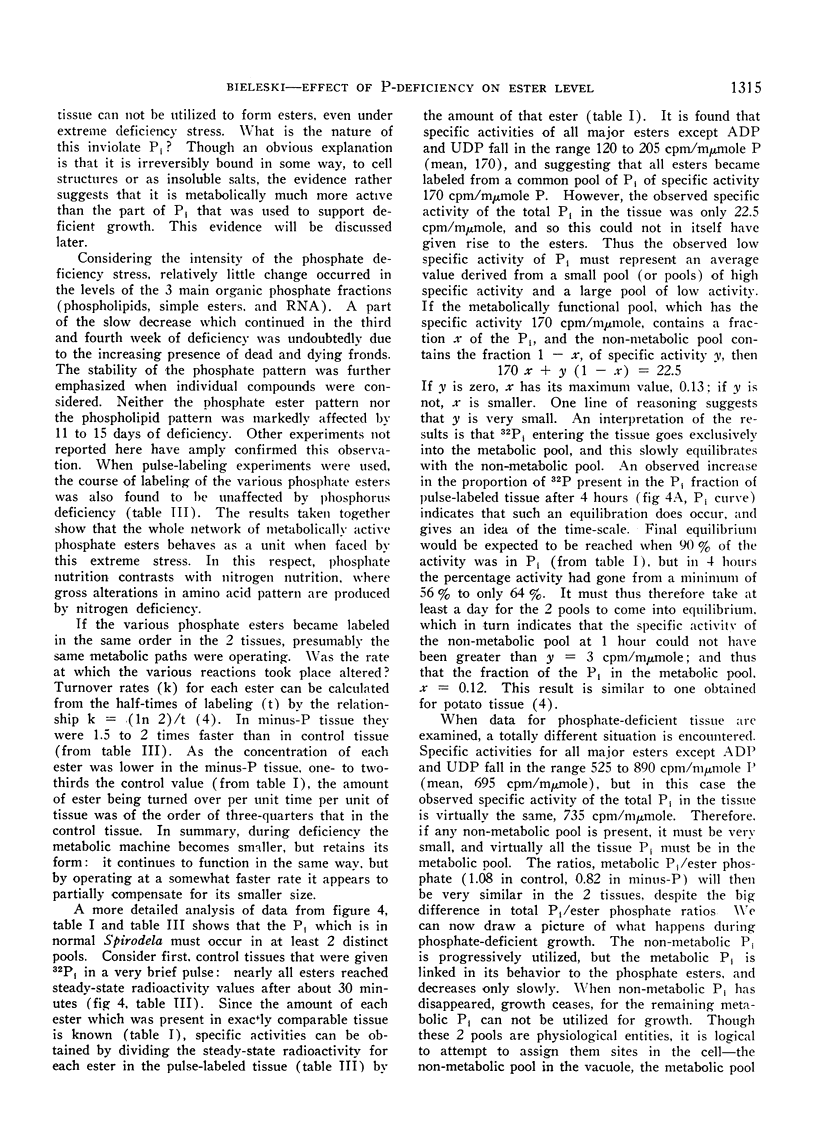
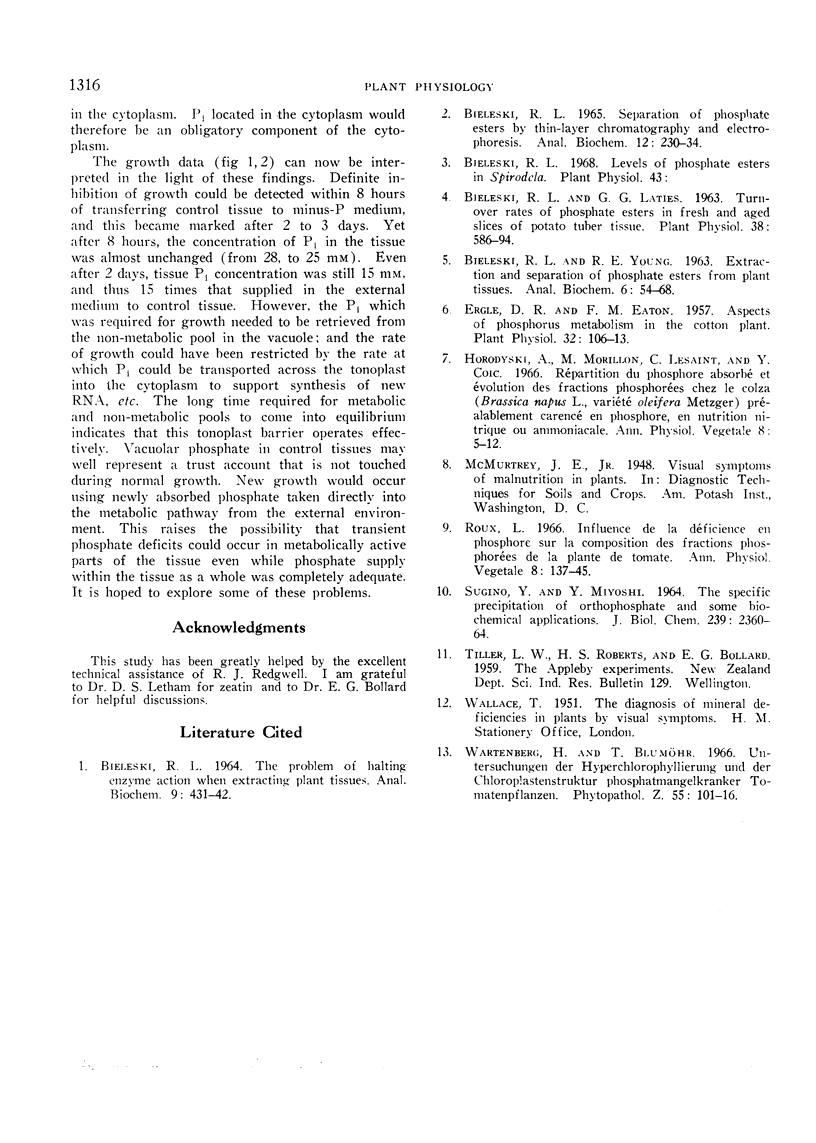
Selected References
These references are in PubMed. This may not be the complete list of references from this article.
- BIELESKI R. L. SEPARATION OF PHOSPHATE ESTERS BY THIN-LAYER CHROMATOGRAPHY AND ELECTROPHORESIS. Anal Biochem. 1965 Aug;12:230–234. doi: 10.1016/0003-2697(65)90086-2. [DOI] [PubMed] [Google Scholar]
- BIELESKI R. L. THE PROBLEM OF HALTING ENZYME ACTION WHEN EXTRACTING PLANT TISSUES. Anal Biochem. 1964 Dec;9:431–442. doi: 10.1016/0003-2697(64)90204-0. [DOI] [PubMed] [Google Scholar]
- Bieleski R. L., Laties G. G. Turnover Rates of Phosphate Esters in Fresh and Aged Slices of Potato Tuber Tissue. Plant Physiol. 1963 Sep;38(5):586–594. doi: 10.1104/pp.38.5.586. [DOI] [PMC free article] [PubMed] [Google Scholar]
- Ergle D. R., Eaton F. M. Aspects of Phosphorus Metabolism in the Cotton Plant. Plant Physiol. 1957 Mar;32(2):106–113. doi: 10.1104/pp.32.2.106. [DOI] [PMC free article] [PubMed] [Google Scholar]
- SUGINO Y., MIYOSHI Y. THE SPECIFIC PRECIPITATION OF ORTHOPHOSPHATE AND SOME BIOCHEMICAL APPLICATIONS. J Biol Chem. 1964 Jul;239:2360–2364. [PubMed] [Google Scholar]


